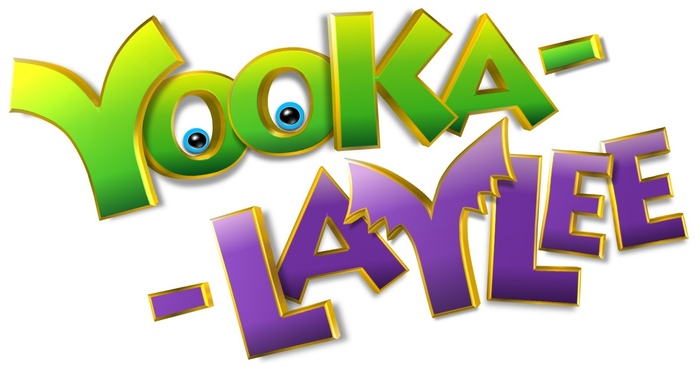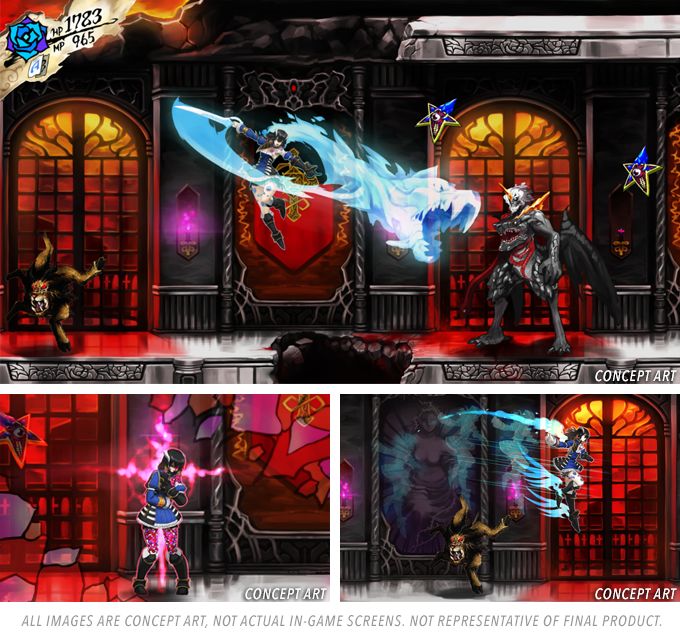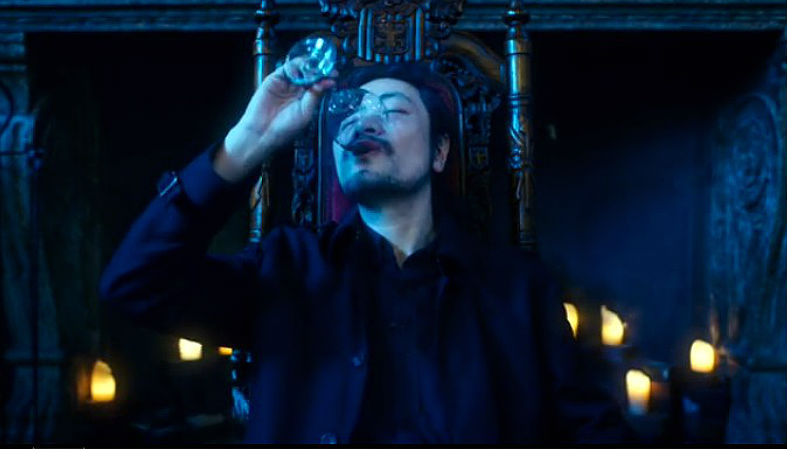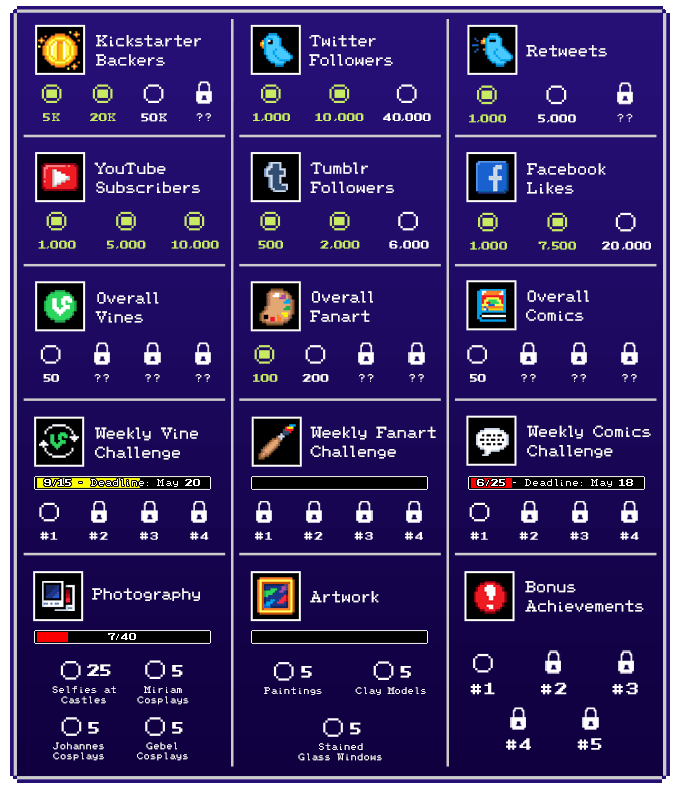There is nothing wrong with preying on people’s nostalgia, which is what is going on between both campaigns. After all, what better way to engage an audience than to remind them of their favorite games from yesteryear? Folks who played Banjo-Kazooie or PS1-era Castlevania in their youth are now old enough to buy their own games, and are no doubt excited to revisit those cherished times with a brand new game. With that said, the means by which Koji Igarashi and Playtonic Games are going about it are not exactly the same. It’s rare that we get to see two such similar campaigns (from a fan fervor and success rate standpoint) appear at right around the same time. As such, we’re going to look at both and compare and contrast them to get a better feel for what it is that has lured so many to backing either or both Kickstarter projects.
First, let’s look over what Playtonic Games offers with their Yooka-Laylee page. They make no bones about their previous developer association, by titling their campaign “Yooka-Laylee – A 3D Platformer Rare-vival!”. It’s cute and let’s everyone know up front the pedigree behind the platformer. In case you didn’t notice the “Rare” comment, then loading up the funding video (or scrolling past it) both reveal a very Banjo-esque game logo. And then, again, they “Rare-surrect” the buddy platformer. They continue to push their past upon people, not as a means to ensure people know, but to excite them purely off that aspect. Who cares about what this 3D platformer has to offer when it’s made by developers who used to run Rare?!
With that said, we do get the general spiel about what Yooka-Laylee is bringing to the table. In many ways, they’re sharing it’ll be just like the classic games but with fancier graphics. But hey, at least there are a few tweaks as well, such as collectibles actually serving a purpose (when they rarely did in N64 days). And yes, though Yooka and Laylee offer much the same feature set as Banjo and Kazooie did, these animals offer opportunities for new aspects as well. That stuff hasn’t been discussed a lot yet, but there’s room to open up such discussions as development continues. Above all else, we’re given video of the game in action and a feeling that this has been in development for at least long enough to trust Playtonic Games’ aims.
Bloodstained: Ritual of the Night also is a fan of wordplay, by introducing the genre of game as an “Igavania” right under the funding video. Right below that is a quote from Koji Igarashi himself – and the entire campaign is listed under his name. If you didn’t realize that this was an actual post-Konami Castlevania game then chances are you’d realize at that point. Unlike Yooka-Laylee’s highly talkative (text-filled) page, Bloodstained is content to offer up very little information near the top of the page. We know the consoles it’s pegged for, who is behind its creation, and a small synopsis. Scrolling more reveals info about the physical copy, stretch goals, backer achievements, social media links, backer unlocks, and clans. Finally, after all this primarily unnecessary preamble (it could have served its purpose near the bottom of the page as well) we get back to Bloodstained itself.
And is gameplay finally given a heavy discussion? No, instead we’re treated to some great character art and backstory, followed by three brief paragraphs about gameplay. Then it’s back to pushing the famed names behind Bloodstained, as well as the multitude of backer rewards. There’s also the fact that no game footage is shown because as this point in time there is nothing they can actually show. Concept art was presumed as enough for folks to throw their money at the campaign, and they were exactly right. Interestingly, unlike most campaigns, they also decided to forgo a chart to explain where money is going.
There’s a reason for Bloodstained lacking a funds chart. If you paid attention to the funding video (or have read interviews with Igarashi during the campaign) then you’ll know that this is not a campaign to fund the game’s development. This project is meant to show their potential business partners that there totally is still interest in this “retro” sort of console game. By funding the Kickstarter to epic proportions fans have demonstrated exactly that. But $500,000 was far from enough to make the game anyway, it was just the arbitrary amount selected to show partners what’s what. Still, it would be great to see a breakdown of how much they estimate true development costs to be, even if us folks aren’t going to fund all of that.
So, here’s what both games have in common: They’re focused obsessively on their creators because that is a known way to generate attention. It proved true, after all! Just look at your favorite game blogs during the launch of either campaign and it’s likely you’ll see a minimum of one story covering the launch. That’s as compared to the zillions of other cool Kickstarters that come out every year and get nary a peep from big blogs. Of course, when you were a developer on a cherished, amazing game then it’s fair to say that you are deserving of this clout.
But this pinpoint focus on creators is a detriment to the game itself. We know the genres for Yooka-Laylee and Bloodstained but little else. Will they be exact clones of their inspirations? If so, there’s little need to say anything at all, but there’s no doubt these people might like to throw in more tweaks as well. Slight differences and upgrades (beyond visual) have been mentioned but only in very short messages. Because of this, any larger tweaks may actually upset backers looking for nothing other than “exact Banjo-Kazooie/Castlevania: SOTN clone.” Well, if that’s what people want it’s likely what they’ll get.
The most obvious difference between both campaigns is that one actually promises funding confirms development while the other is to be used as a gauge of popularity/leverage. With that being the case, it causes one to wonder exactly how much Playtonic Games will need, and why they only pitched a sub-$300,000 goal. $500k isn’t enough for a 2D game, apparently, so $300k probably isn’t enough for a 3D platformer. In any case, Igarashi was explicit with the purpose of his Kickstarter and what the funds really mean. Despite the distinct differences in what funding both campaigns means, they’ve accrued nearly the same amount of funds at this very moment. Both hover somewhere around $2.5 million.
Another unique difference between the two is Bloodstained’s huge focus on social media promotion. Chances are, they really didn’t need to do any of that gamification at all. Most of their goals have not been reached, and it’s possible they never will once the campaign ends. The Kickstarter did not and continues to have no need of social media to get attention. But was there a fear that perhaps people wouldn’t be interested? If so, the heavy focus on social promotion strategy makes sense. On the other hand, Yooka-Laylee’s page offers nothing equivalent. They knew their campaign was going to be a hit with media, and in effect, with the general gaming populace.
Despite the genre and developer differences, both campaigns have succeeded to the degree that they have because of the people involved. If these Kickstarters were up without any famous associations, and the current level of actual game discussion, they’d both have a big struggle toward getting funded at all. 3D platformers are cool and so are Metroidvanias but we’ve seen both attempted in the indie scene lately (and in the past). It will continue. There’s nothing outwardly astonishing about either title except for the fact that these classic designers and developers are back to take another go at it. People are hungry for both genres, but not as obviously without a big name pushing for them in most instances.
In all, the Bloodstained: Ritual of the Night and Yooka-Laylee Kickstarters have shown us that the power of celebrity still can take you far. This concept was a bit shaky lately, but is definitely back in full swing now. Not only that, but we may have even seen the arrival of these campaigns as massive enough to bring in a new wave of backers – facilitating funding far beyond most others. But that’s a topic for its own article. Now that both games have been funded we just need to sit back and (impatiently) wait for them to finally arrive in finished form.








